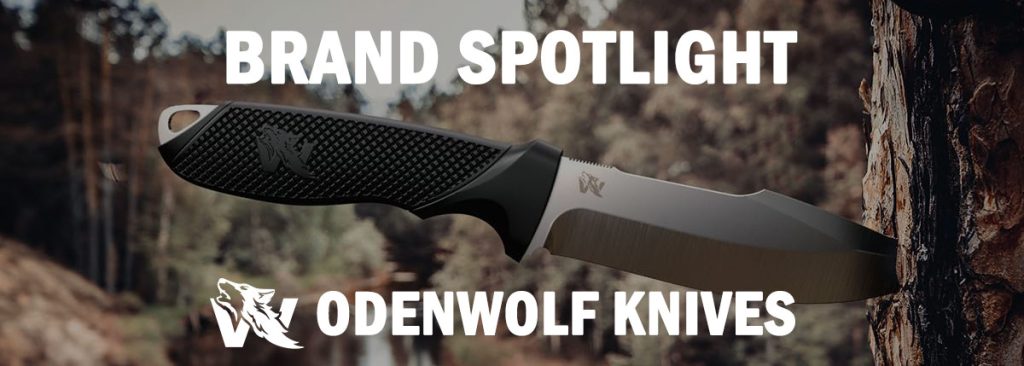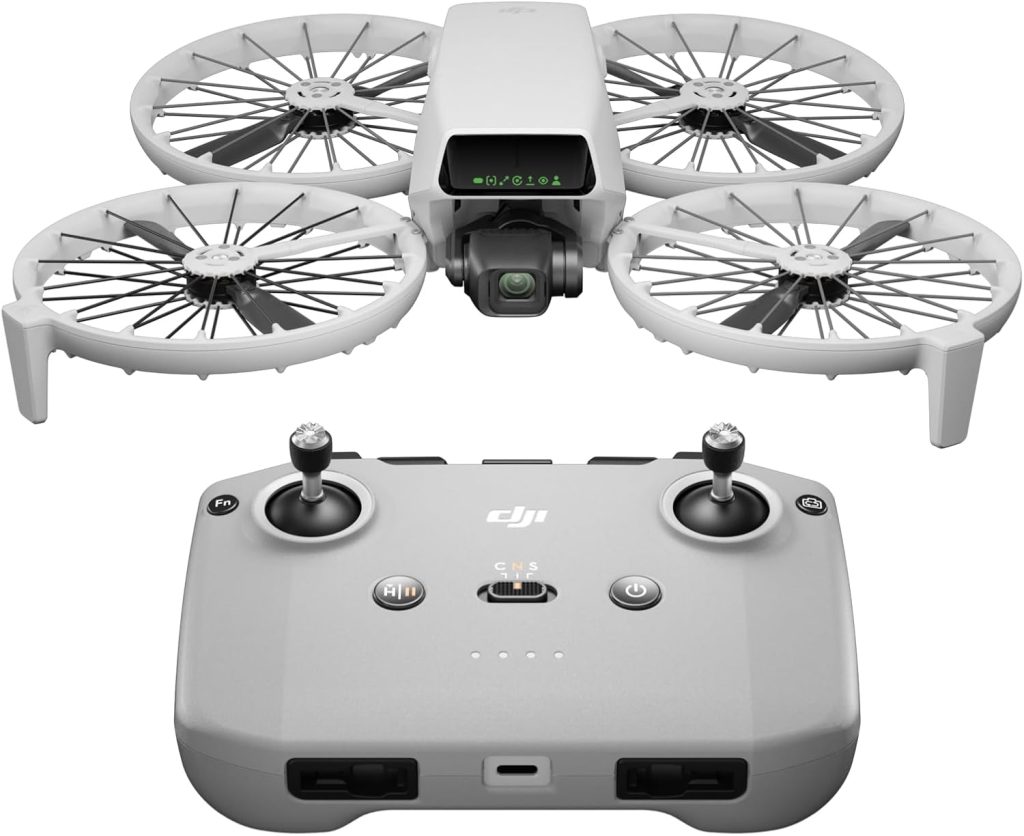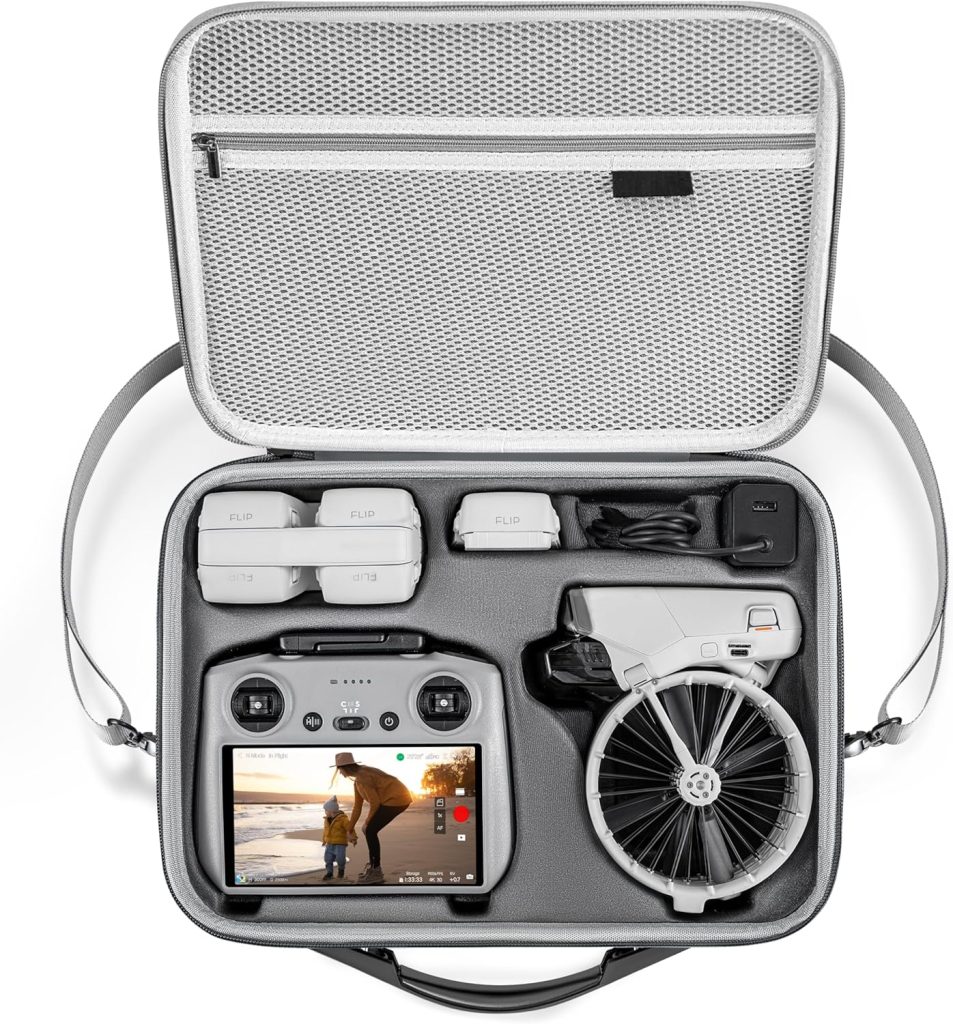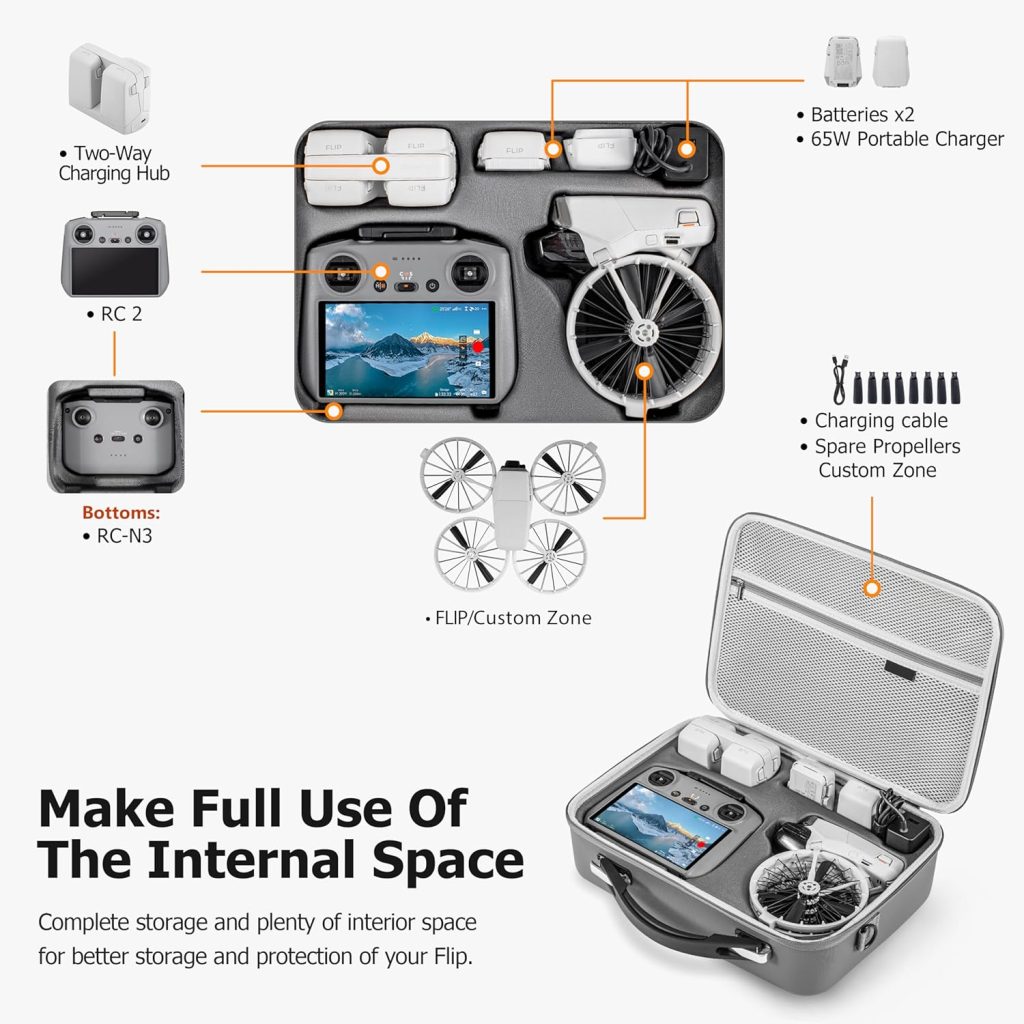Sharing is caring!
The DJI Flip represents a significant evolution in the consumer drone market, offering an innovative folding design with shrouded propellers that prioritizes safety without compromising on image quality. Released in early 2025, this sub-250g drone combines portability with features specifically designed for content creators and vloggers. After thorough testing, we found that while it faces some limitations in windy conditions and lacks advanced obstacle avoidance, its combination of safety features, image quality, and competitive pricing makes it an attractive option for many drone enthusiasts and content creators.
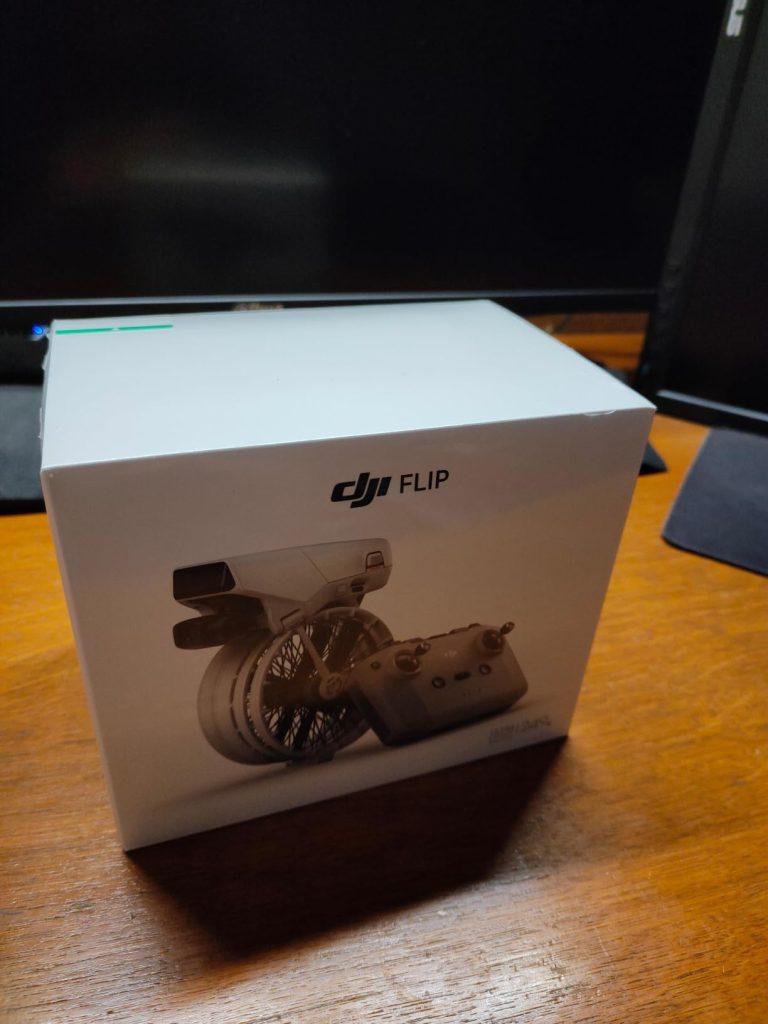
The DJI Flip is available in multiple package configurations:
- Base kit: Includes the drone, one battery, and either the DJI RC2 or RC-N3 controller
- Fly More kit: Includes the RC2 controller, the drone, three batteries, a carrying case, and a new parallel charging hub that can hold four batteries (charging two simultaneously)
For videographers, DJI offers an ND filter kit with ND16, ND64, and ND256 filters to achieve proper motion blur in bright conditions.
“It is definitely one of the quickest drones to deploy… press and hold the button and the drone is going to take off from the palm of your hand and perform the task. When you’re done, you simply have to fold the flip up, aircraft will power off in 5 seconds.” — Shawn, Air Photography
Design and Build Quality
The DJI Flip introduces a first-of-its-kind folding design where propeller guards fold down below the airframe when deployed. These lightweight guards completely encase the rotors, making the drone significantly safer for indoor flights and operations near people. The drone automatically powers on when unfolded if the battery is installed.
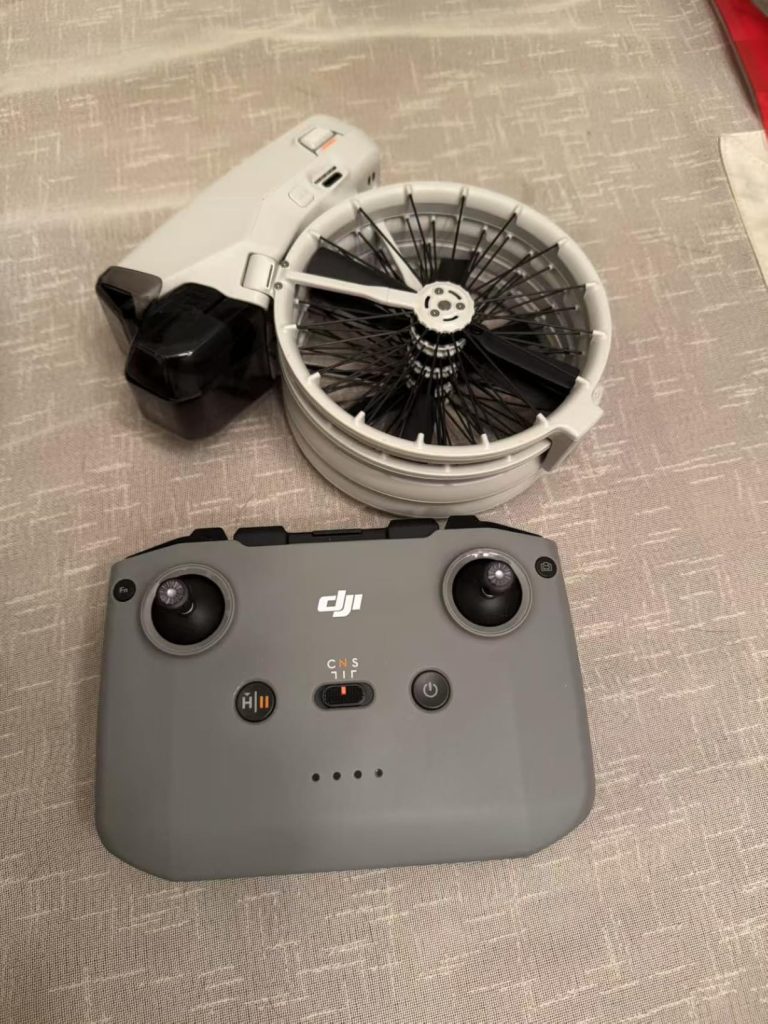
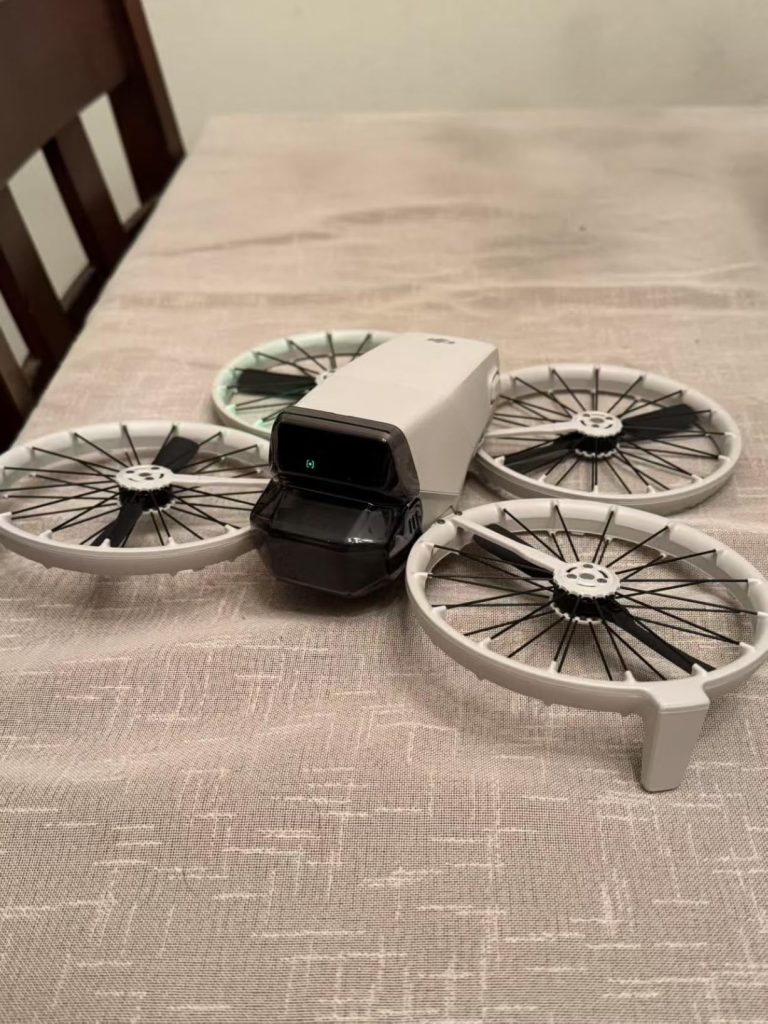
Weighing 249 grams, the Flip sits just under the weight threshold that would require registration in many countries. However, it’s somewhat bulky when folded, measuring 5.35×2.44×6.5 inches collapsed and expanding to 9.17×11×3.11 inches when deployed.
One design limitation involves the propellers’ limited ground clearance, which can cause them to snag in short grass. DJI seems aware of this, as the Flip is primarily designed for hand launches and recoveries.
Camera System and Image Quality
The DJI Flip features a 1/1.3-inch 48-megapixel CMOS sensor paired with a 24mm-equivalent F/1.7 wide-angle lens – the same camera system found in the more expensive Mini 4 Pro. This enables 4K video at up to 60fps, with slow-motion capabilities at up to 100fps in 1080p. The camera supports 10-bit D-LogM video and photo capabilities including 12MP standard shots or full 48MP high-resolution images in RAW format.
“The camera is very similar to that of the DJI Mini 4 Pro… capable of filming in 4K 60. You can film in both a normal color profile or if you prefer, you can film in D-Log M if you’re a person who wants to do your own color grading. It has an aperture of 1.7 and features dual native ISO Fusion.” — Shawn, Air Photography
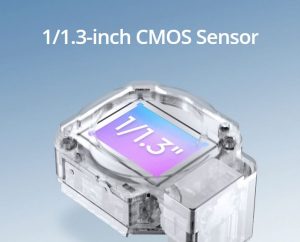
Video quality delivers impressive sharpness in good lighting, with better low-light performance than the Neo due to the larger sensor. The Flip includes a 4x digital zoom, though quality degrades noticeably beyond 2x zoom. For social media creators, the drone supports vertical video recording up to 2.7K resolution through cropping.
When shooting in automated modes, users lose manual control over camera settings like exposure and ISO, which may frustrate experienced photographers.
Flight Performance and Capabilities
The DJI Flip offers a maximum speed of 26 mph in sport mode, with three flight modes – Cine, Normal, and Sport. Flight time is rated at up to 31 minutes on a full charge of its 3110 mAh battery.
The Flip excels in stability and safety during indoor flights or when operating near people. The full propeller protection, hover stability, and quiet operation make it well-suited for capturing footage inside large rooms with fragile objects or people.
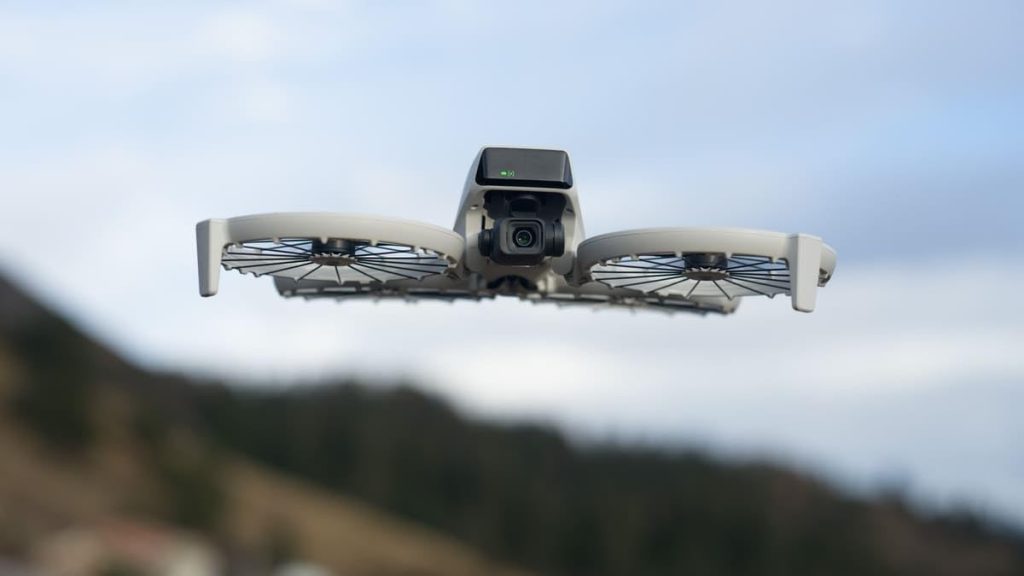
Its main limitation emerges in windy conditions, where its lightweight design and large surface area make it susceptible to gusts. During testing, the drone was notably affected by wind currents, sometimes being pushed backward despite forward control inputs.
Intelligent Features and Control Options
The Flip supports multiple control methods: palm control, mobile app control via virtual joysticks, voice commands, and traditional remote controller operation. When using mobile app control, the drone is limited to a maximum height of 30 meters and a maximum distance of 50 meters.
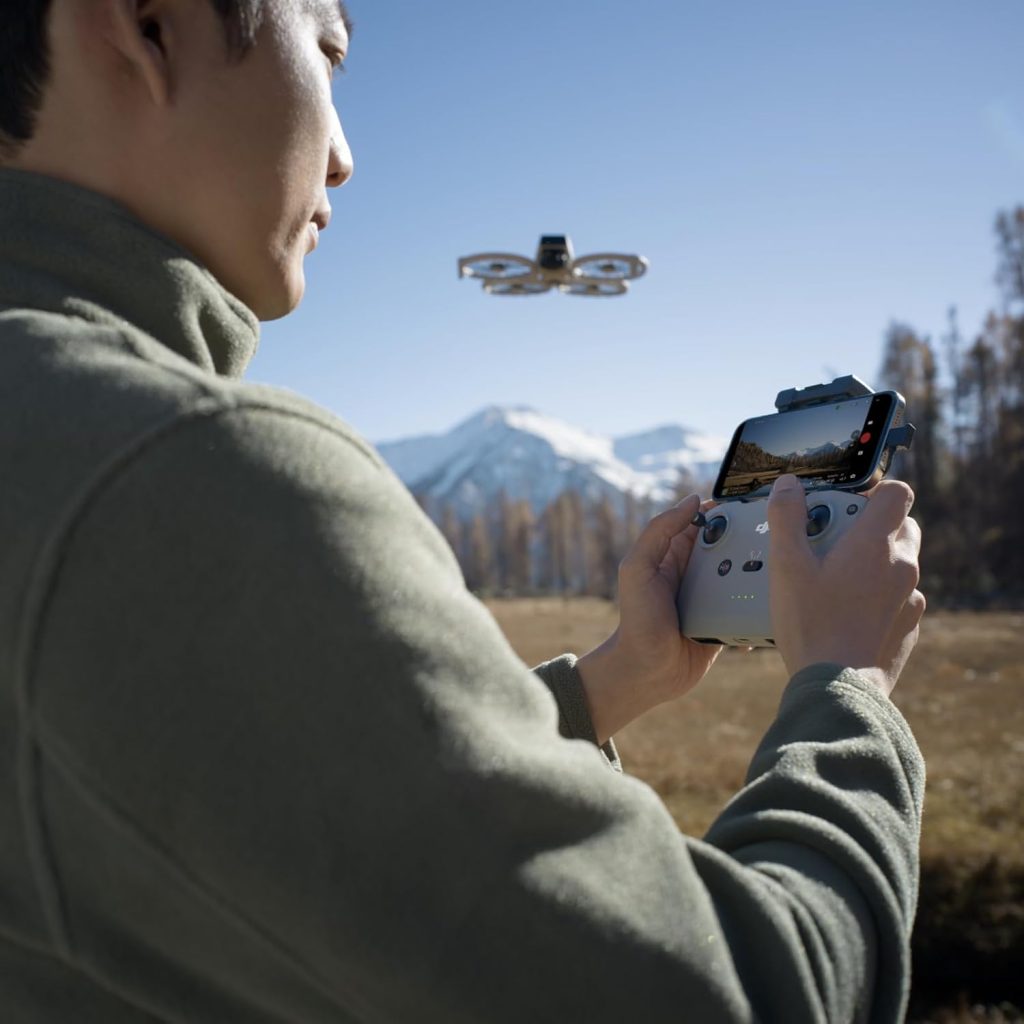
“For a lot of people, the autonomous features of the DJI Flip are going to be exactly what they’re looking for. If you’re a vlogger, you create content for social media, you can easily capture content without a controller… You can also connect it to a smartphone that’s going to open up all the settings.” — Shawn, Air Photography
Autonomous flight modes include Direction Track, which enables the drone to fly backward while following the user, and QuickShot modes (Dronie, Rocket, Circle, Helix, and Boomerang) for social media-ready footage.
The Flip incorporates a 3D infrared sensor for forward obstacle avoidance and downward vision sensors for landing. Unlike the Mini 4 Pro with omnidirectional detection, the Flip lacks side and rear sensors, meaning users need caution when flying backward or sideways.
Voice Control & Audio Features
The DJI Flip comes with full voice control capabilities, allowing hands-free operation with simple commands. Simply say “Hey Fly” followed by commands like “Dronie” or “Rocket” to execute automated flight patterns.
A particularly useful feature is the built-in audio recording capability, which captures sound via your smartphone’s microphone (or connected Bluetooth mic) and embeds it directly into your videos. The software automatically filters out drone noise, making this ideal for vlogging or narrating your flights.
Controller Compatibility
“What makes the Flip a really compelling choice is due to its versatility… flying it autonomously, flying it with a smartphone, but you also have the option of flying with a controller. At the time of filming this video, it’s compatible with the DJI RC-N3 and the DJI RC2.” — Shawn, Air Photography
With a compatible controller, the Flip opens up additional capabilities beyond autonomous mode. It uses the O4 transmission system for extended range (rated up to 13km) and enables access to advanced flight modes like Master Shots, hyperlapses, and panoramas that aren’t available in autonomous mode.
Comparison with Competitors
DJI Flip vs. DJI Neo
| Feature | DJI Flip | DJI Neo |
| Camera Sensor | 1/1.3-inch 48MP CMOS | 12MP CMOS |
| Video Resolution | 4K at up to 60fps | 4K at up to 30fps |
| Weight | 8.8 oz (249g) | 4.8 oz (135g) |
| Dimensions (unfolded) | 3.1 x 11.0 x 9.2 inches | 1.9 x 5.1 x 6.2 inches |
| Night/Low Light Performance | Good | Limited |
| Price | $439/£369 | $199/£169 |
The Flip offers significantly better camera quality than the Neo with the same sensor as the Mini 4 Pro. While both feature propeller guards, the Flip’s larger sensor and advanced features justify its higher price for content creators prioritizing image quality.
DJI Flip vs. DJI Mini 4 Pro
Feature | DJI Flip | DJI Mini 4 Pro |
Camera Sensor | 1/1.3-inch 48MP CMOS | 1/1.3-inch 48MP CMOS |
Obstacle Detection | Forward and downward only | Omnidirectional |
Maximum Speed | 26 mph (12 m/s) | 37 mph (16 m/s) |
Flight Time | 31 minutes | 34 minutes |
Wind Resistance | Limited | Superior |
Propeller Guards | Integrated, folding | Not included |
Advanced Tracking | Basic tracking | ActiveTrack 360° |
Price | $439/£369 | $799/£689 |
While sharing the same camera sensor, these drones represent different philosophies. The Flip prioritizes safety and ease of use, making it ideal for beginners and indoor flying. The Mini 4 Pro offers more advanced features, better performance in challenging conditions, and more sophisticated obstacle avoidance for experienced users.
Pros and Cons
Pros
- Innovative design with folding propeller guards creates a safer drone experience
- High-quality camera system borrowed from the more expensive Mini 4 Pro
- Multiple control options (hand gestures, voice commands, smartphone, remote)
- Sub-250g weight classification avoids registration requirements in many places
- Autonomous flight modes enhance accessibility for beginners
- Good value at $439 considering camera quality and feature set
Cons
- Susceptible to wind, limiting effectiveness in breezy conditions
- Limited obstacle avoidance (forward and downward sensors only)
- Propellers can snag in short grass during takeoffs/landings
- Loss of manual camera controls in automated modes
- Somewhat bulky when folded compared to other sub-250g drones
Who Is the DJI Flip For?
“I think the DJI Flip is going to be the perfect choice for some people… if you’re a person who just wants an easy to use drone that you can quickly deploy, capture content for your social media, perhaps just to share some of your adventures with your family and friends, or perhaps you’re a vlogger…” — Shawn, Air Photography
The Flip is ideal for:
- Content creators who need indoor aerial footage or shots near people
- Event videographers documenting weddings, conferences, or performances
- Real estate photographers capturing interior property tours
- Social media influencers and vloggers using autonomous tracking modes
- Beginning drone pilots who benefit from the protected propellers
- Active lifestyle enthusiasts documenting outdoor activities
Conclusion
The DJI Flip successfully carves out a distinct niche in the consumer drone market, combining excellent image quality with innovative safety features at a competitive price. Its unique folding propeller guard design fundamentally changes where and how a drone can be safely operated, opening creative possibilities that traditional drones cannot match. While it has limitations in wind and lacks advanced obstacle avoidance, these are reasonable compromises given its intended use cases and price.
“I’m really happy that DJI has been developing autonomous drones a little further… there’s a lot of times when I’m just out for a quick hike, I just want to grab some shots. Pulling a drone like this out of a bag or your pocket, putting it up, grabbing the shot, putting it away is just so much more convenient. If you’re like me, you’ll probably find you’re capturing more content just due to its simplicity.” — Shawn, Air Photography
For content creators working primarily indoors or in controlled environments, especially near people, the Flip offers an excellent balance of capability, safety, and affordability. Those requiring maximum wind resistance or omnidirectional obstacle avoidance may need the more expensive Mini 4 Pro, but most users will find the Flip’s capabilities more than sufficient for their creative needs.

Hey, I’m Eric, your go-to guy at Eric’s Gadget Reviews. This is my little slice of the web where I spill the beans on all sorts of gadgets, yard tools, and anything that catches my eye (and hopefully yours too).
Sharing is caring!

